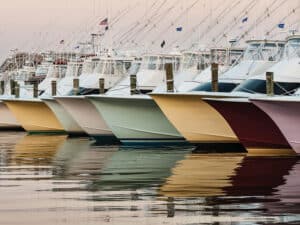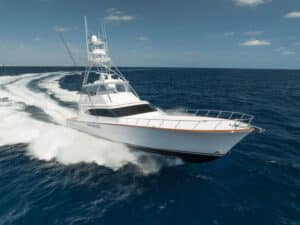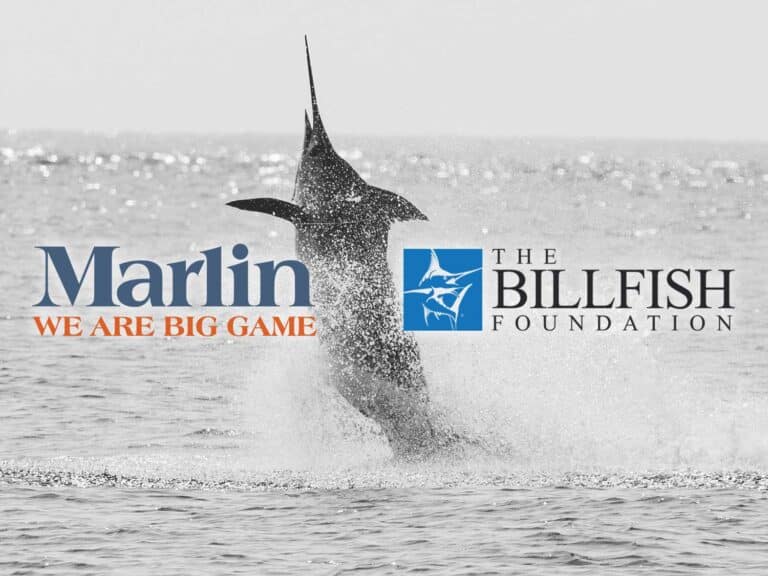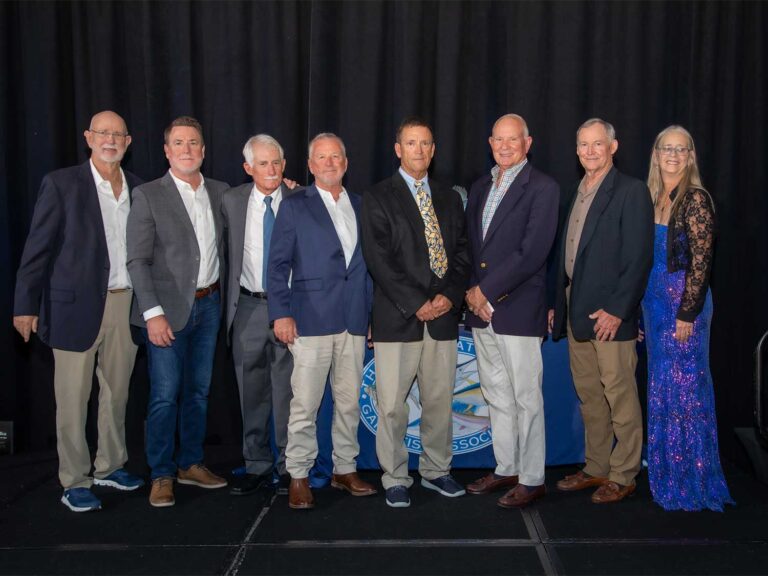
“If you build a Maverick, you can pick the very trees our craftsman will use to construct the hull,” says Larry Drivon, owner of Maverick Sportfishing Yachts. Tucked into a hill just up the road from the world-famous Los Sueños Resort in Costa Rica, that type of hands-on experience is only one of many unique benefits of owning a Maverick. “Our boats continue to evolve, but our basic design has stayed the same. It works — there’s no need to change it,” continues Drivon. The pride in his voice is evident, and who can argue with him? Mavericks are proven fish raisers.
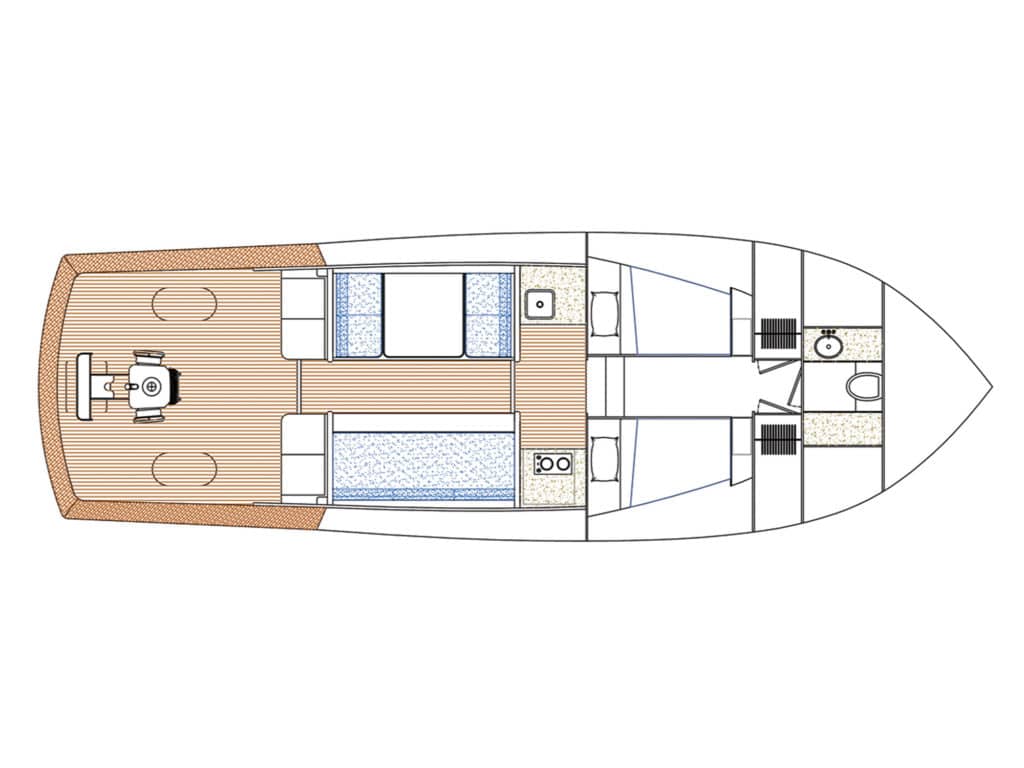
Geaux Fly is no exception to the strong pedigree of tournament-winning boats built by Maverick over the years. The 42-foot Spanish Fly is hull No. 1 and has over 12,000 billfish releases in 33,000 hours at sea — I’ll take those odds any day. In fact, I did: I took Will Drost up on his invitation to head down to Los Sueños for a couple of days aboard his father’s new 43-foot Geaux Fly.
First Impressions
Geaux Fly‘s beautiful lines were evident as we walked down the charter dock on the far side of Los Sueños Marina. Her Awlgrip white finish and mahogany accents added to the classic design for which Mavericks are known. Before long, we were headed offshore, and I joined Capt. David Mesen in the bridge for the ride out to the fishing grounds. Capt. Daniel Espinosa, the shop foreman at Maverick and an accomplished captain aboard the tournament-winning Spanish Fly, joined us to put the boat through her paces.
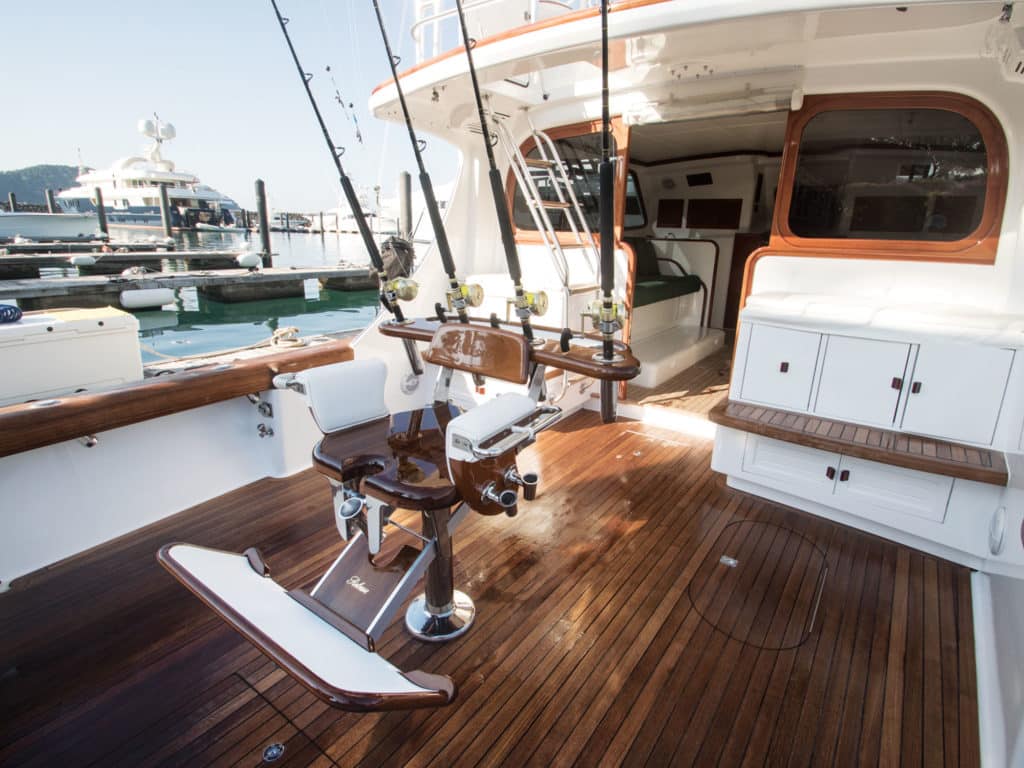
Performance
As we passed Tortuga Island just outside the breakwater, Mesen pushed the throttles forward. The twin 575 hp Caterpillar C9 engines began to roar as she quickly jumped up on plane. Geaux Fly is built with triple-planked laurel in her hull and bottom (making her both light and strong) and benefiting not only her ride but also her efficiency. Before long, we were cruising at 26 knots while turning 2,150 rpm and burning 36 gph; on the pins, she edged over 31 knots at 2,500 rpm. “The most impressive thing being a charter boat is that we can usually burn less than 100 gallons of fuel a day without restricting where our captain goes,” comments Drost.
What I couldn’t wait to find out was how she trolled and what kind of maneuverability she had with fish hooked up, and it didn’t take long to see Geaux Fly in action.
Functionality
While watching the spread, Drivon and I discussed his boatbuilding philosophy and the reason for doing certain things in his boats. “The whole real push on our boats is functionality. I won’t put something on our boats just for cosmetic appeal. If it doesn’t have a purpose, it doesn’t go on the boat,” comments Drivon. He also wants to build a boat that exceeds expectations when the rods are bent and fish are jumping behind the boat. Inspired by the G&S design (and much to the dismay of his naval architect), Drivon opted for a curved transom below the waterline.Designed to lift the transom as the boat pushes water in reverse, the boat did just that as Mesen powered her backward to gain line on an angry Pacific sailfish. I fully anticipated the usual barrage of seawater into the cockpit, but it never happened; the transom lifted up higher the harder he pushed to gain line on the fish. This design does cause the boat to lose lift moving forward. Rather than add trim tabs, Maverick opted for wedges to supply the needed lift to get her out of the hole.
Cockpit
Finished in jungle-grown teak, the covering boards and aprons surround the cockpit flawlessly. Tuna tubes are thoughtfully located within their own hatches on both the port- and starboard-side covering boards, out of the way below the outriggers. This setup makes it an ideal configuration for live-baiting for blue marlin on the Costa Rican seamounts — a huge attraction for the owner. Mezzanines sit on either side of the cockpit; an icebox is below to port, and tackle drawers and a rigging station are built under the starboard-side mezzanine. Both mezzanines are elevated to the perfect height to see the spread. Teak footrests are functional and add a beautiful accent without getting in the way while moving around. A flow-through baitwell is laid in the sole to starboard of the pedestal; the location eliminates the need for pumps that would be necessary if the baitwell were located in the transom. On the port side, a matching icebox is in the identical location and is fed by the same ice maker used for the mezzanine icebox.

Salon
The sleek finish of Nicaraguan mahogany juxtaposed against the white accents and green upholstery is eye-catching. Nothing fancy here, and yet the Geaux Fly features most of the salon amenities you’d find on a much larger boat. A U-shaped dinette sits to starboard, with a large bench on the port side. Both the dinette and bench can be converted quickly for additional bunk space for crew during overnight trips. The Geaux Fly optimizes space just about everywhere. Typically tucked away in a cabinet, Maverick added a microwave lift behind the freezers to occupy a space usually reserved for the air conditioner. The microwave rises from the mahogany countertop with the push of a button. “We used to put a two-burner stove in them, but no one ever turned it on,” says Drivon. “That’s why we opted for this design. You can tuck a George Foreman and a rice cooker in the extra storage space and you’re all set.” Should Geaux Fly need to replace an engine unexpectedly, the bulkhead and furniture can be removed in less than 30 minutes. The engine can be completely removed in less than four hours, a huge plus if you need to make a quick swap and get fishing the next day. “These boats were meant to fish, and they fish every day. That’s the beauty of the construction and the thought process behind the build. It’s the perfect charter boat,” says Drost.
Accommodations
The accommodations below are simple and clean, perfect for typical day trips out of Los Sueños. Matching full-size berths sit symmetrically to port and starboard. Drivon says, “I build a boat with my customer in mind. I knew the Drosts were tall folks, so I went ahead and added 6 extra inches to the typical berths we do in our boats … and I didn’t even ask them about it.” Maverick also tucked a bait freezer under the starboard berth and tackle drawers below the portside berth for added storage.
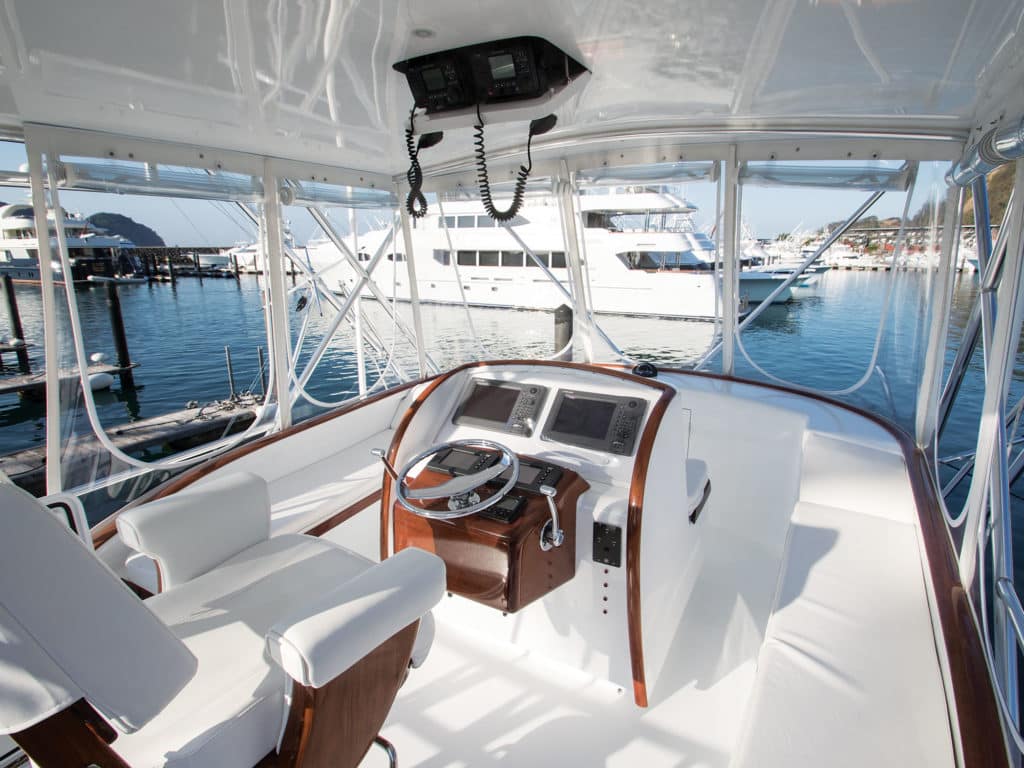
Bridge
Different from Maverick’s previous builds, Drost opted for, and helped design, the center-console configuration to allow for easier access around the bridge. Twin benches to the port and starboard flank either side of the helm pod, and a two-person seat is conveniently located up front. Built-in forward cushions enhance the seating configuration and are oriented at the perfect angle for stretching out during a ride home from a day offshore. And after two days of fishing aboard Geaux Fly, I did just that. From raw wood found deep in the Costa Rican jungle to an efficient and functional fishing machine, Maverick truly knocked it out of the park with their latest build.


